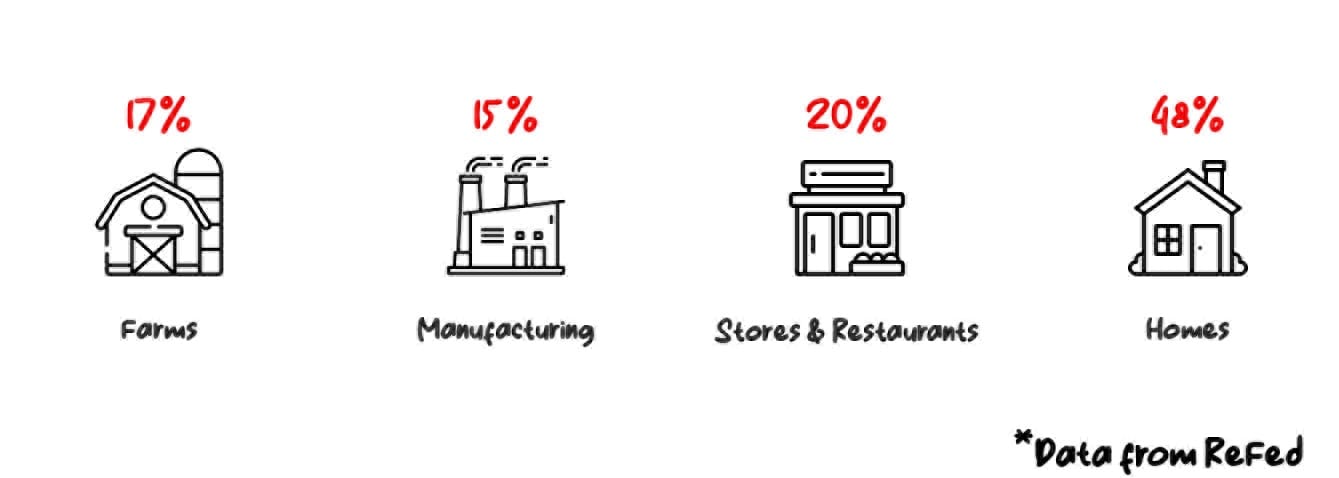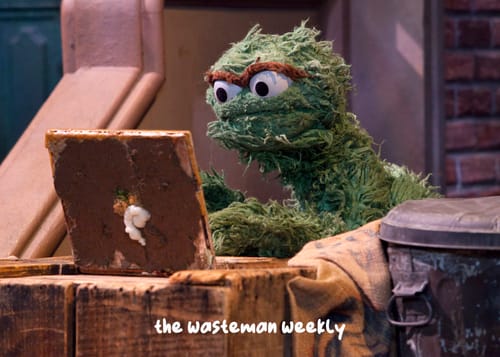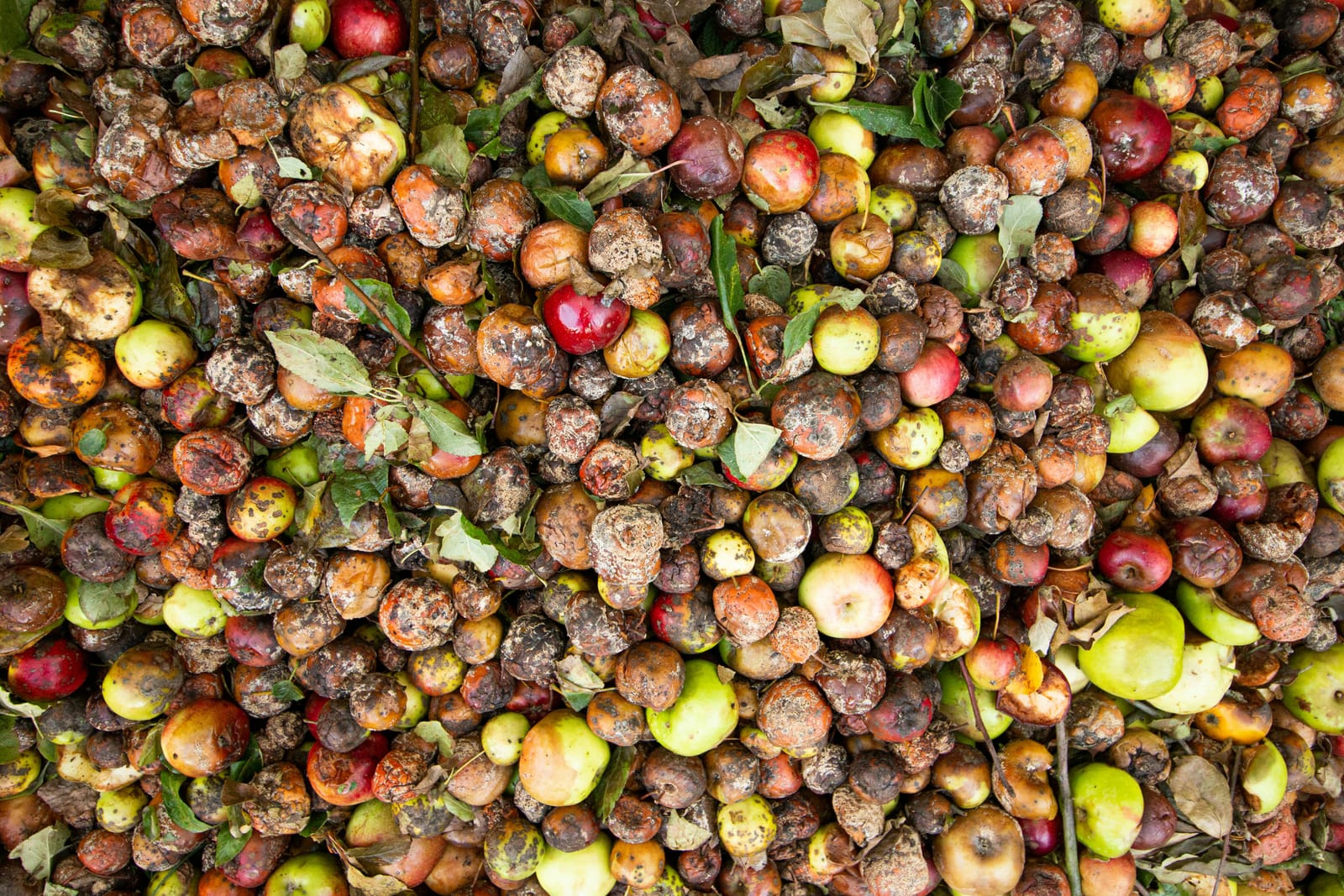Want to become a Trillionaire? Solve Food Waste
How bad is our food waste problem really?
It may be hard to swallow, but the reality is that food waste is a $1 trillion problem. Globally, we're wasting about a third of the food we produce for consumption, and the emissions are really starting to add up. According to the UN, food waste alone accounts for almost 10% of global greenhouse gas emissions. The modern food supply chain is complex, and it's easy to see how scraps may be lost along the way. But our hands aren't exactly clean either, seeing as in the western world nearly half of food waste is actually coming from households like yours and mine.
Where all does food get wasted?

ReFed's more descriptive chart here
So much of our food is just… Too Good To Go
As one could imagine, the food-waste-tech sector isn't nearly as populated as some of its other climate-issue counterparts. But one company in particular has made a pretty big splash. Enter Too Good To Go, addressing food waste by connecting consumers with restaurants, bakeries, and now grocery stores to find a home for their unsold and perfectly edible inventory. TGTG rose to popularity with their "surprise bag" from brands like Starbucks and Pret A Manger which fall in the $5-$10 range and have helped them amass over 85 million users. Now, TGTG has expanded their operation to help supermarkets target and discount their inventory based on their expiration dates, which helps grocers bolster their razor thin margins and consumers at the register as inflation continues to raise prices.
What can we do to reduce food waste in our own home?
Food waste can still be a sticky subject given the numerous reasons we throw it out. One of the key differences you can make in your home is paying attention and better understanding "use-by labels", which indicate when a food is no longer safe to eat, and "best-before labels", which indicate optimal quality. And if you find yourself eating out more than from your fridge, consider using apps like Too Good To Go for your next meal, with a ton of features and presence all over the globe, you may just shave a few more dollars off our $1 trillion food waste problem, and save yourself a few bucks in the process too.
If you'd like to further understand what food expiration labels actually mean, check out this explanation by RealSimple, covering nearly all the labels you'll run into here:
Best If Used By/Before:This is a quality assurance date and serves as a "suggestion" for when the taste and quality of food are at their peak. It is not a purchase or safety date.
Use By: This is the suggested date by when you should eat the food. But just because it's a day or two past the use-by date doesn't mean that consuming it will make you sick, although you should evaluate the quality of the food yourself after this time. It is not a safety date, except when used on infant formula.
Sell By:This is not a safety date, but rather a date for retailers that helps them determine how long an item should remain on the shelf. According to the IFT, "one-third of a product's shelf-life remains after the sell-by date for the consumer to use at home."
Freeze By:According to the USDA, this date indicates when a product should be frozen to maintain peak quality. It is not a purchase or safety date.
*No, this post is not sponsored by Too Good To Go, however I am a big fan








